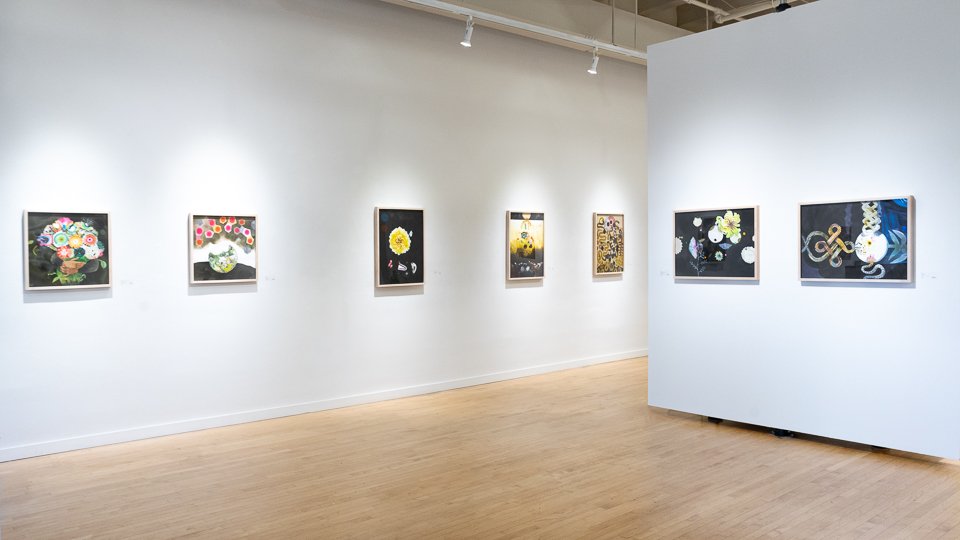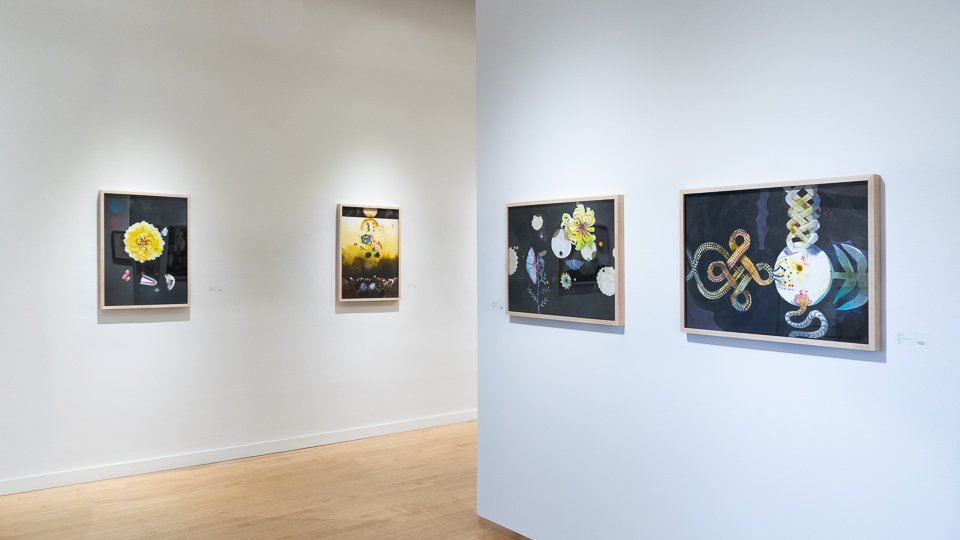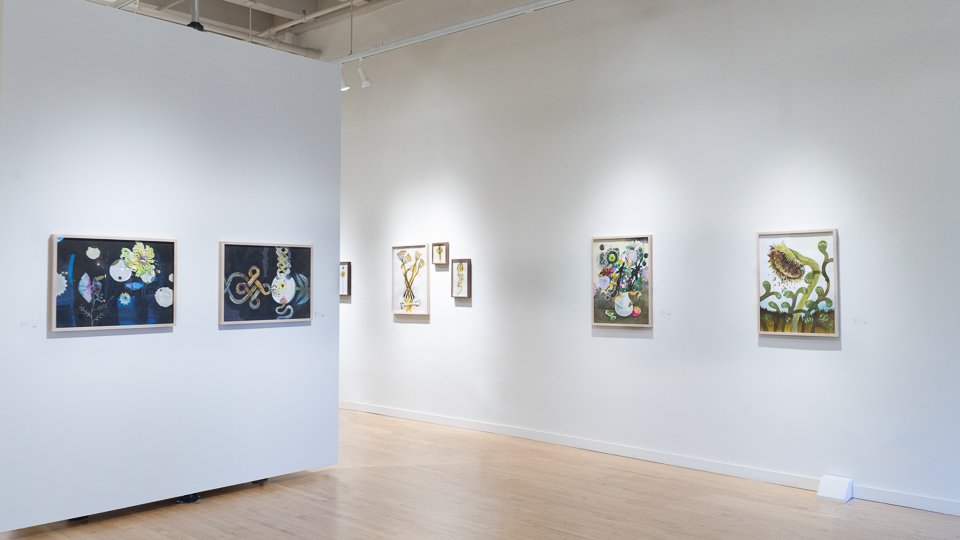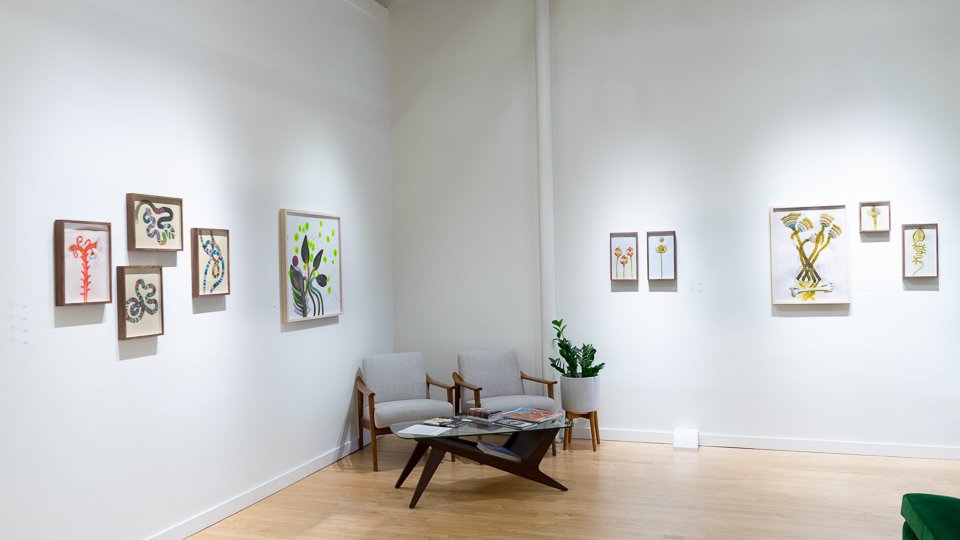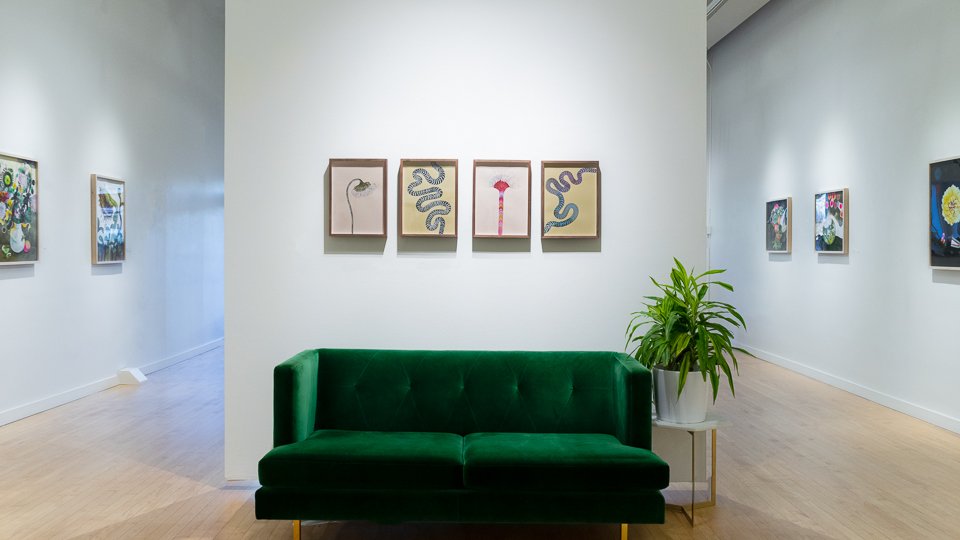GALA BENT
THE GARDEN AT NIGHT
J. Rinehart Gallery is thrilled to announce our first exhibition from multidisciplinary artist, painter, and illustrator, Gala Bent. Her exhibition, The Garden at Night, explores the limits of our understanding through development and decomposition. Meditation on the brevity and preciousness of life lies within the realm of Bent’s exhibition. Dig your hands into the dirt and join us in The Garden at Night.
Walking through The Garden at Night there is a necessity to rely on other senses and approaches to make sense of a world that abounds in mystery. Many of us seek the wisdom that is right under our feet. At night, shapes are made from smells and sounds. Other creatures are at work. Seeds germinate in the dark. Plants live and they die. This is the gardener’s version of vanitas— transience of life, the futility of pleasure, and the certainty of death.
Tucked between flora and fauna in Bent's exhibition are moments of abstraction. Drawings of ropes and knots mimic crochet and point to the ways that we use fibers of plants, woven and pieced, to cover our own bodies. They also imply the cellular growth of plants and biological systems. The internal tending that takes place with these meditative drawings is not unlike the tending of a plot of ground, to clear weeds, to water, to fertilize, to make space for new growth.
Gala Bent received her MFA in Interdisciplinary Visual Arts from State University of New York at Buffalo (SUNY) Buffalo, New York in 1999 and has exhibited her work nationally ever since. Bent has been a finalist for the Neddy Award in 2012, and was awarded the Westfjords Residency, in Þingeri, Iceland in 2017. Her work can be found in the Microsoft Art Collection, the Jordan Schnitzer Print Collection, Portland, OR, and the Washington State Art Collection as well as many private collections in the US and beyond.
In conjunction with The Garden at Night, an exhibition catalog will be published with an essay written by arts writer and editor, Lauren Gallow.
-
GALA BENT
EXHIBITION STATEMENTThe Garden at Night
For this body of work, I have turned my attention from black holes and the cosmic origin stories that have dominated my work in the last few years to the earthy locus of soil and plants. The deep companionship of the plant world to human life is undeniable, central to our survival, but we often take it for granted. In these drawings and paintings, I celebrate plants as teachers and mysterious life partners, hearkening to art historical forms like the still life and the nocturne as structures to explore the cycles of germination, bloom, and decay.
Medicine came first from the properties of plants being discovered as antidotes to our ills. Many of us seek the wisdom that is right under our feet, even as our ills may mount in size and complexity. I thought of these desires for healing and hope many times as I worked on these pieces. The title of the exhibition, The Garden at Night, refers in some ways to the limits of our understanding. When it’s dark, we must rely on other senses and approaches to make sense of a world that abounds in mystery. At night, shapes are made from smells and sounds. Other creatures are at work. Seeds germinate in the dark. The title also refers to the cycles of life and death that are part of any gardener’s experience and play directly into the still-life tradition of vanitas—a meditation on the brevity and preciousness of life shown by an array of flowers or fruits at all stages of development and decomposition, attended by pollinating butterflies and hungry beetles.
Some of the more abstract moments in the exhibition—the knots and the crocheted fields—come out of a practice of drawing that parallels the building of cells on cells but also the processes of knitting, weaving, and piecing that have been part of the human use of plant and animal fibers and dyes to cover our own bodies with color and protection. Just as digging one’s hands in the dirt can bring a sense of grounding, so too can the tactile and slow act of drawing. The internal tending that takes place with these meditative drawings is not unlike the tending of a plot of ground, to clear weeds, to water, to fertilize, to make space for new growth.


